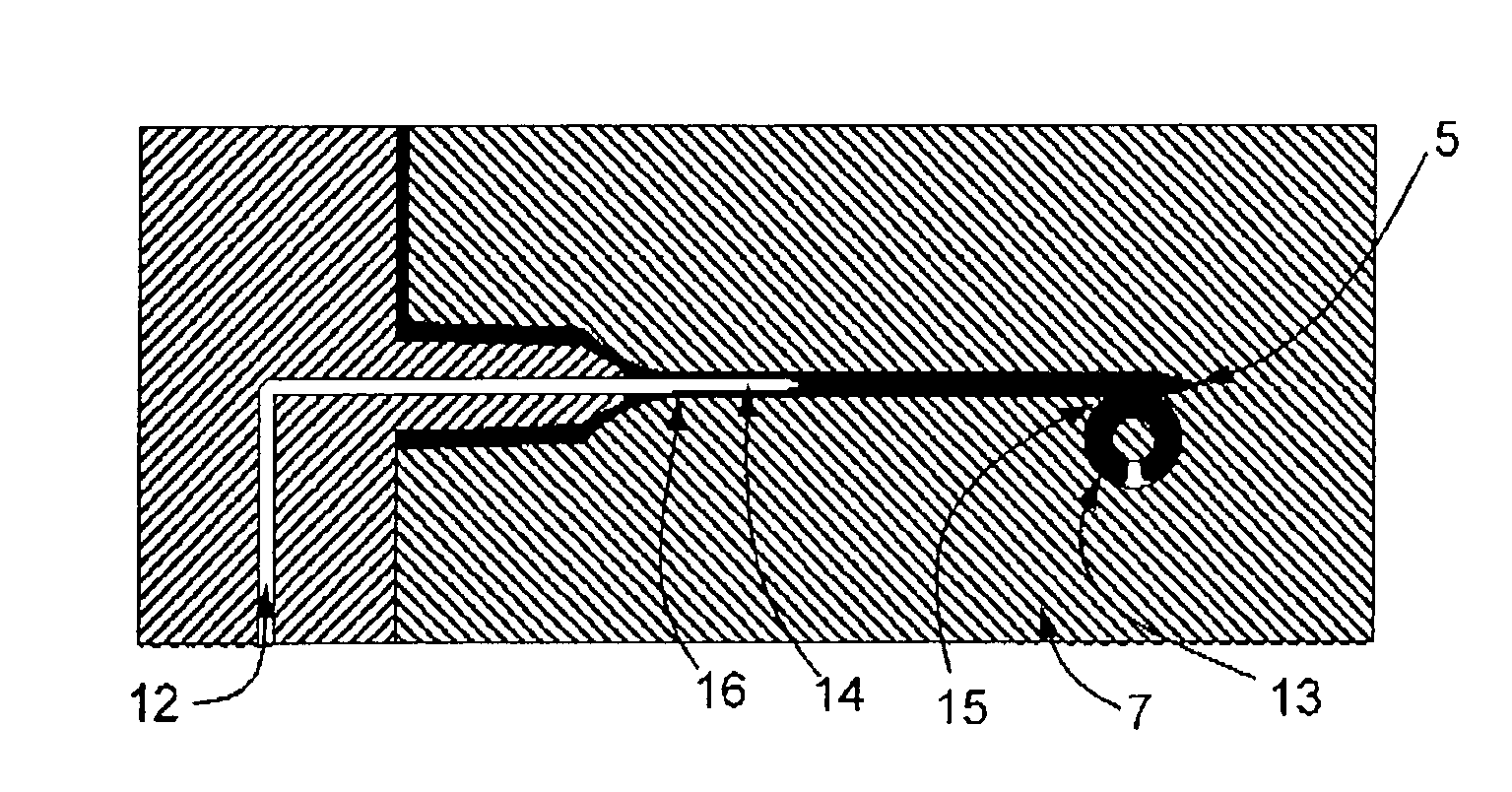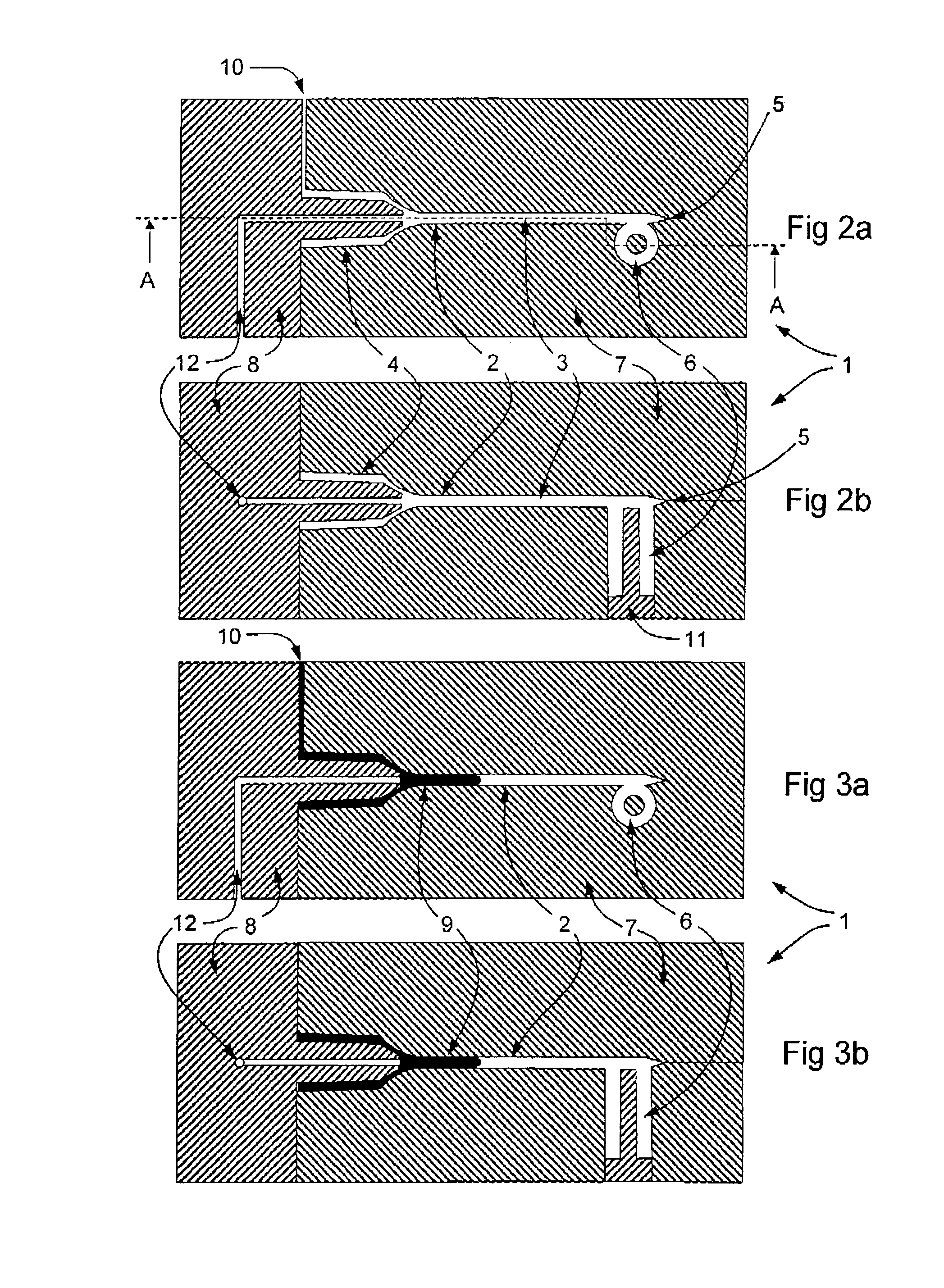Method and apparatus for moulding cannulae
a technology of polymeric cannulae and injection moulding, which is applied in the field of manufacturing cannulae, can solve the problems of incomplete articles, unsuitable formed articles for intended use, and insufficient liquid interior portion of working fluid, and achieve the effect of improving the reliability and consistency of cannula
- Summary
- Abstract
- Description
- Claims
- Application Information
AI Technical Summary
Benefits of technology
Problems solved by technology
Method used
Image
Examples
Embodiment Construction
[0032]The objects of the invention are best understood with reference to the embodiments described herein and with reference to the figures. It will be understood by those skilled in the art that the invention is not limited to the embodiments shown in the figures but includes embodiments not illustrated but within the scope of the claims appended hereto.
[0033]FIG. 1 is a schematic diagram illustrating the method of the invention. FIGS. 2 to 8 show one embodiment of the method and with suitable apparatus to practice the method. FIGS. 9 and 10 show alternative embodiments within the scope of the invention. FIG. 1 shows generally the steps comprising one aspect of the injection in which an article such as a cannula having a lumen therethrough is formed by fluid-assisted injection moulding. In a first step 50 an appropriate amount of liquid polymer is injected into at least one cavity in a mould which is ready to receive the liquid polymer. In a second step the at least one cavity is f...
PUM
| Property | Measurement | Unit |
|---|---|---|
| volume | aaaaa | aaaaa |
| mechanical | aaaaa | aaaaa |
| shape | aaaaa | aaaaa |
Abstract
Description
Claims
Application Information
 Login to View More
Login to View More - R&D
- Intellectual Property
- Life Sciences
- Materials
- Tech Scout
- Unparalleled Data Quality
- Higher Quality Content
- 60% Fewer Hallucinations
Browse by: Latest US Patents, China's latest patents, Technical Efficacy Thesaurus, Application Domain, Technology Topic, Popular Technical Reports.
© 2025 PatSnap. All rights reserved.Legal|Privacy policy|Modern Slavery Act Transparency Statement|Sitemap|About US| Contact US: help@patsnap.com



